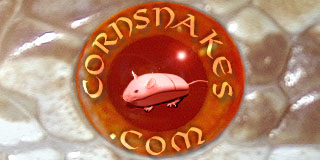I would hate to be hard on the Cali kings. But I have 3 and all of them have bitten. Only one has never bitten me personally but has bitten my boyfriend. Where as I have 2 corn snakes. Neither has bitten me or acted like they wanted too. I have held many many corns and have never been bitten...yet. So from my personal experience I would choose a corn snake over a Cali king. I don't have any experience with any of the other types of kingsnake. I've heard that mountain kings are less bity. Don't don't if that is true however.
Cali Kings and Florida Kings are the "great white shark" of the snake community. If it looks, smells, acts, moves, or even remotely resembles food, they taste it. This often results in us bleeding a little bit. They do tend to be more defensive than corns, and they do tend to be more insatiable of appetite than corns.
But that's part of the "game". Most of the snakes in the
getula species are like this, in my experience...Cali, Florida, Desert, Speckled, Eastern, Black, and Mexican Black kings all tend to be larger, more defensive, and more food-aggressive. I have dealt with all of these subspecies, but I have never worked or played with an Apalachicola king, so I don't really have much info on them particularly. That's part of what makes these particular kings fascinating to keep, in my opinion. You learn their attitudes, just as you would a corn, and you adapt your handling, feeding, and cleaning techniques to suit the attitude of the snake. I have been bitten by every
getula king I have ever owned, but that doesn't diminish their beauty and intrigue in my eyes one bit. It's part of what makes them interesting and fascinating to keep.
If taking an occasional bite is something that really bothers you, than these guys aren't likely to satisfy you. Most of the time, as these snakes become adults and get used to being handled and worked with, they settle down, and become less defensive. They will almost always keep their feeding response, which means you always have to be "on your toes". But again...it makes them a much more interesting snake to keep in captivity, in my opinion...
